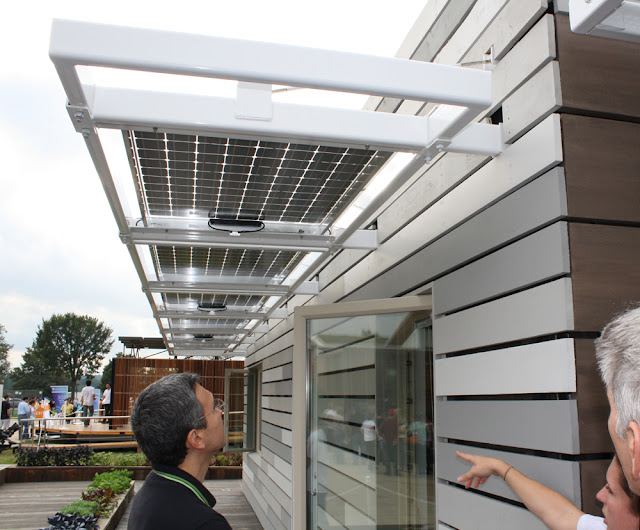by Rolf Kielman
In a February blog post, Lee Grutchfield and I discussed the challenges involved in making good and affordable places to live. We’ve made some progress on this front, and we’re back to share what we’ve done to date.
The criteria, as we described it, is to design a home that is affordable, easy to build, healthy, beautiful, durable and energy efficient. We want to make these houses so they can be manufactured under controlled circumstances and then shipped in manageable parts to the building site. And we want to erect houses in 2 months rather than the 4-6 months often required for homes of modest proportion and size.
So together with Josh Chafe, our young and creative cohort, we have begun to define and execute homes that fulfill the criteria we described. Thus far we’ve been working with designs that are basically one room wide. We’ve looked at archtypes in the factory housing of Sheldon Springs, going back 25 years to work that Rolf did with Roland Batten, and we looked carefully at the houses strung along Mansfield Avenue in Burlington, Vermont. There are lessons in these houses worth studying, such as advantages in ventilation and ease of shipping attributable to building widths of one room.

We are also working on a standard system of dimensioning. This is not a new concept: witness Frank Lloyd Wright’s Usonian houses spread through portions of North America. Wright’s work exhibits both elegance and quiet beauty in the establishment of order and hierarchy. In this vein, we are utilizing modules of 48” increments and utilizing common window widths and room sizes to achieve this order.
In a February blog post, Lee Grutchfield and I discussed the challenges involved in making good and affordable places to live. We’ve made some progress on this front, and we’re back to share what we’ve done to date.
The criteria, as we described it, is to design a home that is affordable, easy to build, healthy, beautiful, durable and energy efficient. We want to make these houses so they can be manufactured under controlled circumstances and then shipped in manageable parts to the building site. And we want to erect houses in 2 months rather than the 4-6 months often required for homes of modest proportion and size.
So together with Josh Chafe, our young and creative cohort, we have begun to define and execute homes that fulfill the criteria we described. Thus far we’ve been working with designs that are basically one room wide. We’ve looked at archtypes in the factory housing of Sheldon Springs, going back 25 years to work that Rolf did with Roland Batten, and we looked carefully at the houses strung along Mansfield Avenue in Burlington, Vermont. There are lessons in these houses worth studying, such as advantages in ventilation and ease of shipping attributable to building widths of one room.

We are also working on a standard system of dimensioning. This is not a new concept: witness Frank Lloyd Wright’s Usonian houses spread through portions of North America. Wright’s work exhibits both elegance and quiet beauty in the establishment of order and hierarchy. In this vein, we are utilizing modules of 48” increments and utilizing common window widths and room sizes to achieve this order.

In our work, we are utilizing a standard system of components applicable to homes of differing overall size. By this we mean that a single bathroom or kitchen layout can be used in a 1400 square foot house as well as one that is 1800 square feet. By using common components, we can drive down the cost and increase the efficiency.
In our sketches below we show 3 slightly different houses. They vary in size and program but have strong similarities. They exhibit options that will give home buyers discretion in how they arrange component parts. The designs can be pre-made or manufactured off site and they exhibit simple dimensioning systems that are economical and elegant. The designs run from 1400 to 2200 square feet and contain different program components for those with larger families or those who have chosen to work at home.

Our hope is to build several of these homes in a new development near Burlington. If you have suggestions, questions or comments, we would love to hear from you!















































